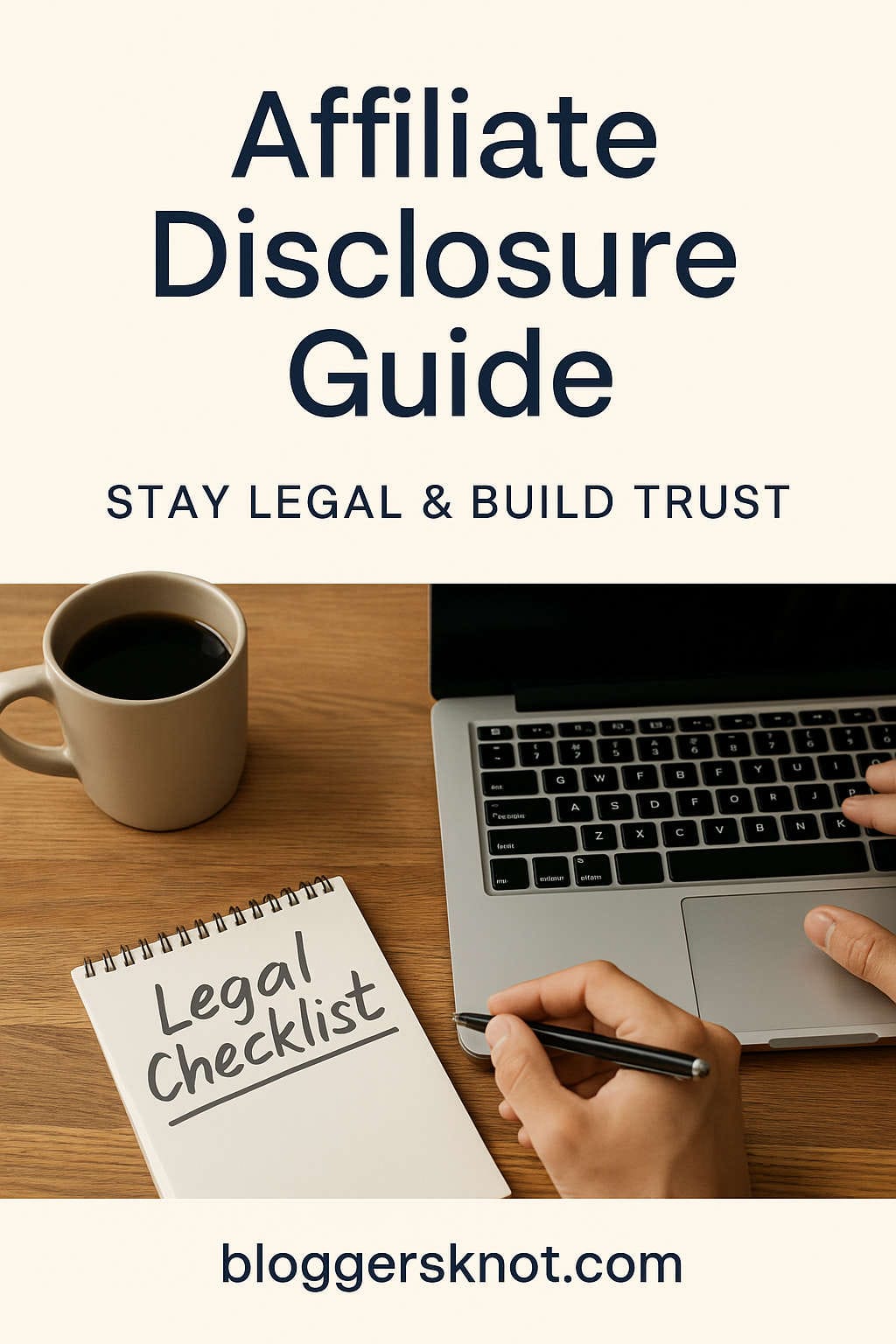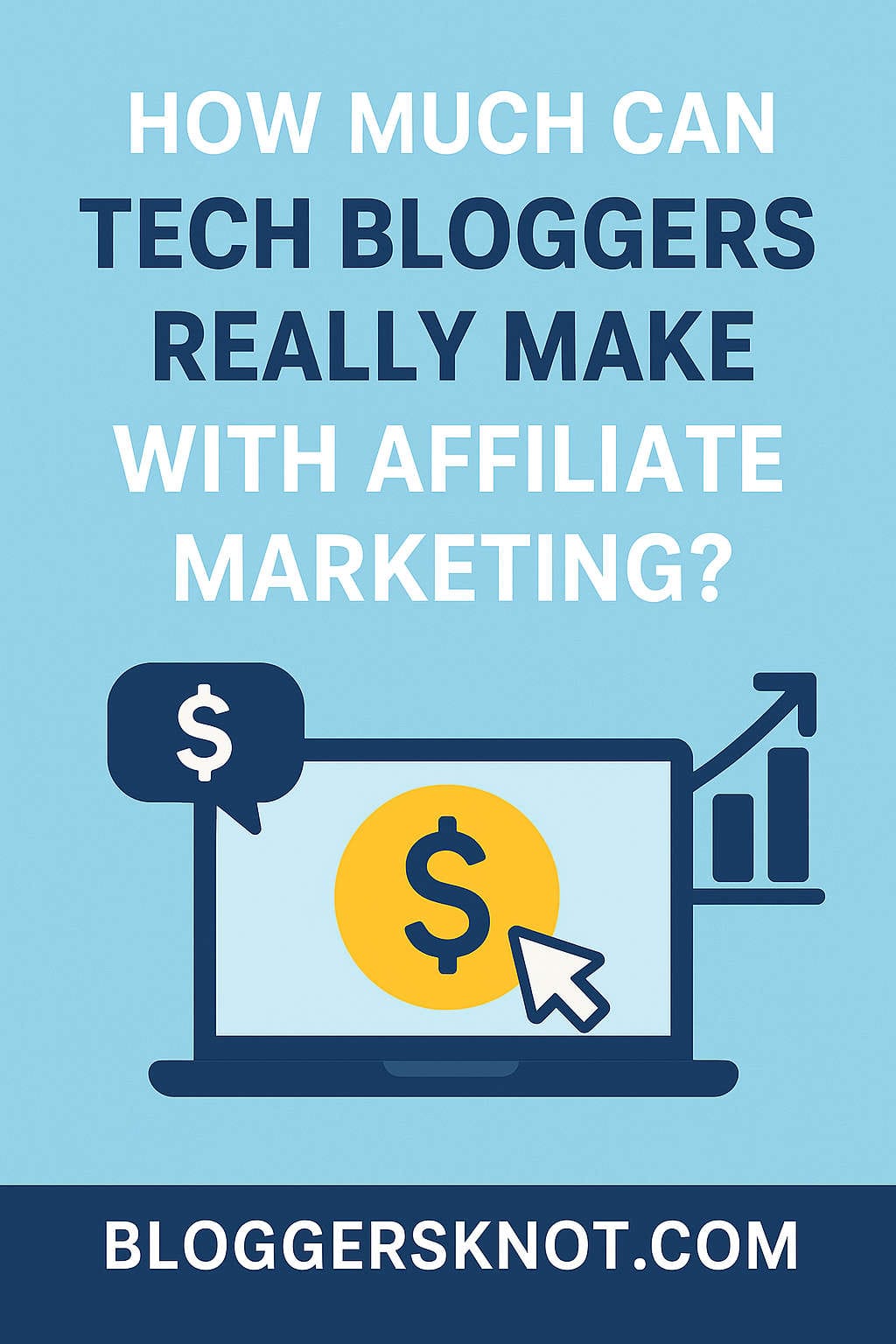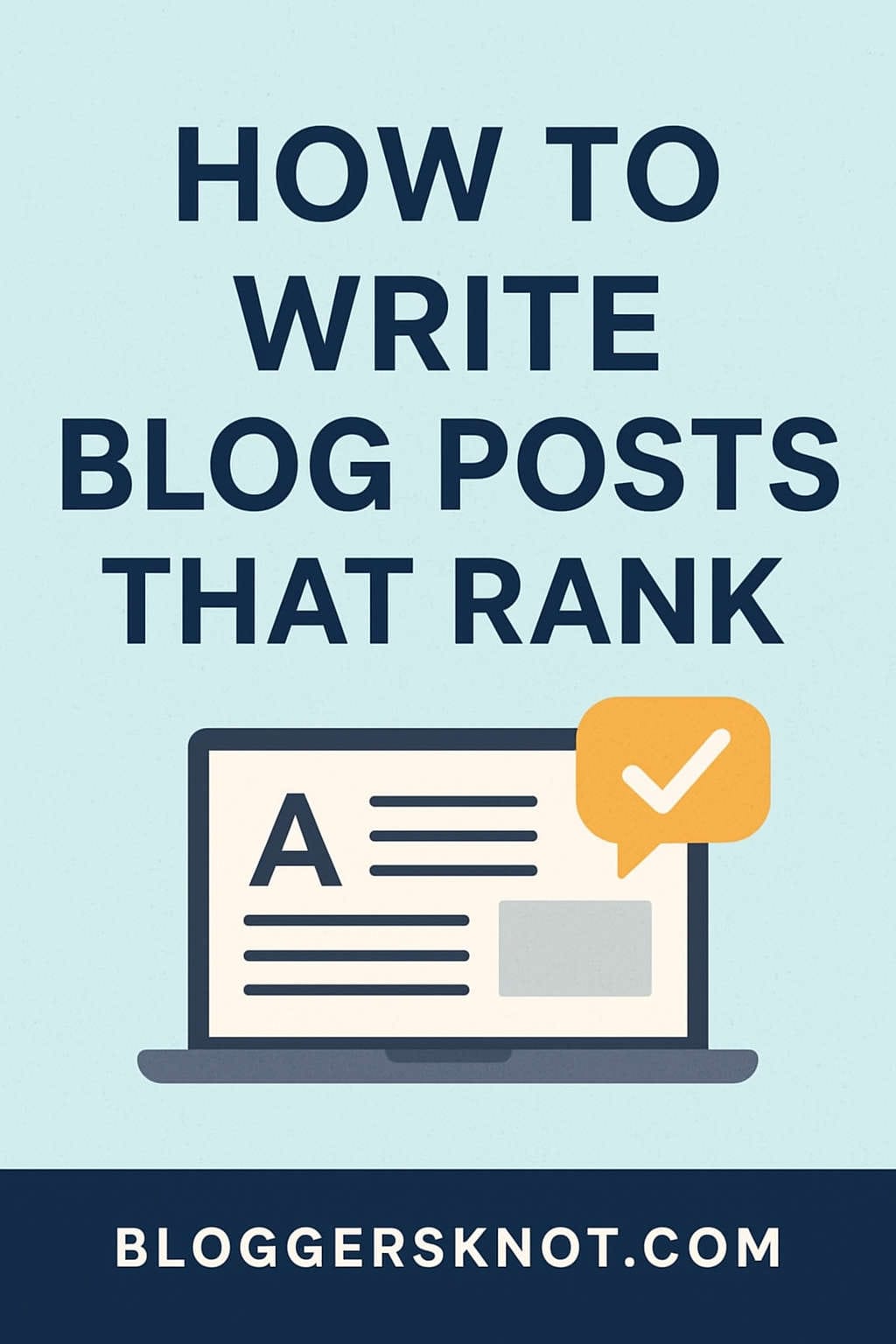Let’s have a real talk. When you started your blog, you were probably dreaming about sharing your passion, connecting with people, and maybe—just maybe—making some money from that thing you love to do.
You weren’t dreaming about writing boring legal disclaimers.
But here’s the thing: if you want to make money through affiliate marketing (one of the best ways bloggers earn an income), you can’t ignore the disclosure part. And what if I told you that doing it right isn’t just about avoiding government fines? It’s actually your secret weapon for building unshakable trust with your audience.
This guide is going to strip away the scary legal jargon and give you a practical, step-by-step playbook. We’ll cover exactly what you need to do, where to put your disclosures, and how to turn this legal requirement into your greatest asset for building a loyal community.
Why This Isn’t Just “Legal Stuff” – It’s The Foundation of Trust
Before we dive into the “how,” let’s get our heads around the “why.” This is crucial because if you understand the reason behind the rule, it becomes second nature, not a chore.
Imagine your best friend tells you, “You HAVE to try this new pizza place! It’s the best in the city!” You’d probably go, right? Now, imagine you find out later that the pizza place is paying your friend $20 for every customer they send. You’d feel a little… weird about it. You’d wonder if the pizza was actually good, or if your friend was just motivated by the cash.
That exact feeling is what we’re trying to avoid with our readers. Affiliate disclosures are simply you saying, “Hey, I think this pizza place is amazing, and just so you know, if you go because I sent you, they might toss me a few bucks for the recommendation.”
It’s about honesty. It respects your reader’s intelligence and allows them to make a fully informed decision.
The Legal Eagles: Meet the FTC
In the United States, the party police for this kind of thing are the Federal Trade Commission (FTC). Their job is to protect consumers from shady and deceptive advertising. They’ve published something called the FTC Endorsement Guides, which are the rulebook for influencers, bloggers, and anyone else who promotes products.
Their core principle is simple: You must disclose any “material connection” you have to a company. A “material connection” is anything of value, including:
- Earning a commission from an affiliate link (like Amazon Associates, ShareASale, etc.)
- Getting a free product to review
- Receiving a discount on a product you talk about
- Being paid for a sponsored post or video
- Having a business or employment relationship with the company
What happens if you don’t? The FTC isn’t just a theoretical boogeyman. They have handed out fines that reach tens of thousands of dollars per violation. Beyond the scary legal stuff, the reputational damage is often worse. If your audience feels tricked, they leave. And they tell others. It can be a death sentence for a blog built on authenticity.
The Golden Rule: The 4 C’s of a Rock-Solid Disclosure
A good disclosure isn’t about hiding in the fine print. It’s about being upfront and clear. Remember these four words:
- Clear: Use simple, plain language. No legalese. Your grandma should understand it.
- Bad: “This entity may monetize via qualified disbursements.”
- Good: “I earn a small commission from purchases made through my links, at no extra cost to you.”
- Conspicuous: It must be easy to find and hard to miss. It should be placed where a reader is highly likely to see it before they even think about clicking a link. (We’ll get into placement in a minute.)
- Concise: Get to the point. You don’t need a three-paragraph essay. A sentence or two is often perfect.
- Consistent: Your disclosure practice should be the same on your blog, your Instagram, your YouTube channel—everywhere. Consistency builds familiarity and trust.
Your Disclosure Action Plan: Where and How to Place Them
This is where most bloggers get confused. A single link in your footer labeled “Legal” is not enough. You need a multi-layered approach, like an onion of transparency (but way less likely to make you cry).
Layer 1: The Foundation – Your Site-Wide Disclosure Page
This is your homepage for honesty. Every single blog that uses affiliate links should have a dedicated Disclosure or Disclaimer page. This is your comprehensive, detailed explanation.
Where to put it: Link to this page in your website’s footer and/or your main navigation menu. It should be easy to find from anywhere on your site.
What to include on this page (Template ready for you!):
Disclaimer for [Your Blog Name]
Here at [Your Blog Name], my mission is to provide you with honest reviews and helpful recommendations. To support this work, I participate in various affiliate marketing programs.
What does that mean?
This means that throughout my site, you will see links to products and services. If you click on these links and make a purchase, I may earn a small commission from that sale—at absolutely no extra cost to you.
My Promise to You:
I only recommend products that I have personally used, thoroughly researched, and genuinely believe will provide value to you. My reviews are always my own honest opinions. The commissions I earn help me to keep this blog running, creating free content, and supporting my family.
Programs I’m A Part Of:
I am a participant in the Amazon Services LLC Associates Program, an affiliate advertising program designed to provide a means for sites to earn advertising fees by advertising and linking to Amazon.com. As an Amazon Associate, I earn from qualifying purchases.
I also participate in programs from [List 2-3 other major networks you use, e.g., ShareASale, Commission Junction, Rakuten Advertising].
Your Support Matters:
When you use my affiliate links, you are directly supporting the time and effort that goes into creating the content you love. It’s what allows this site to exist. Thank you for your support!
If you have any questions about my disclosure policy, please don’t hesitate to contact me at [your email address].
Layer 2: The First Alert – The Per-Post Disclosure
This is your most important disclosure. Every single blog post that contains even one affiliate link needs a clear disclosure at the very beginning of the post.
Why at the beginning? Because the FTC requires the disclosure to be made before the affiliate link. A reader must be informed of the relationship before they have the chance to click.
Best Practices:
- Place it right after your introduction hook, before you start listing any “best of” products or diving into a review.
- You can style it to make it stand out—a different background color, a border, or bold text.
- Example: “Quick heads up: This post contains affiliate links. This means if you click and make a purchase, I may receive a small commission at no extra cost to you. I only recommend products I truly believe in. Thanks for your support!”
Layer 3: The Safety Net – In-Content or “Proximate” Disclosures
For long articles, “top 10” listicles, or massive review roundups, a reader might scroll past your top disclaimer or jump directly to a specific product from a table of contents. In these cases, it’s a best practice to add a brief, gentle reminder near clusters of affiliate links.
This isn’t about being annoying; it’s about being thorough and respectful.
Examples:
- Right before a product list: “Below are my top picks for beginner-friendly cameras (includes affiliate links).”
- Next to a specific button: Instead of just “Buy on Amazon,” try “Check Price on Amazon (Affiliate Link)”.
- In a review: “Full disclosure: The company sent me this product to test, but my opinion is 100% my own.”
Layer 4: The Social Sphere – Disclosures for Instagram, Pinterest, TikTok, and YouTube
The rules don’t stop at your blog’s border. They extend to every platform where you promote products. The key is to make the disclosure unmissable within the context of that platform.
Instagram:
- Use the built-in “Paid Partnership” tool when tagging a brand. This is the gold standard.
- In your caption, start with #ad, #sponsored, or [Ad].
- CRUCIAL: Place the disclosure AT THE BEGINNING of your caption. Hiding it among 30 other hashtags at the bottom is not compliant.
- Stories: Use the built-in paid partnership sticker or clearly write “Ad” or “Sponsored” on the screen.
Facebook, Twitter (X), LinkedIn:
- Begin the post with #Ad, #Sponsored, or [Partner].
- Example: “#Ad: I’ve been using [Product] for the last month to organize my life, and here’s my honest take…”
Pinterest:
- Include #affiliatelink or #ad directly in the Pin description.
- You can also start the description with a phrase like: “Affiliate link: My favorite fall sweater is finally back in stock!”
YouTube:
This requires a multi-prong approach because viewers consume content in different ways.
- Say it aloud: Verbally disclose the relationship at the beginning of the video. “Just so you guys know, some of the links in the description are affiliate links…”
- Show it on screen: Use a text overlay in the first few seconds of the video that says “Includes affiliate links” or “Sponsored.”
- Write it in the description: The first line of your video description should include your disclosure, above the fold (before the “Show more” link). Then, list your affiliate links below.
Navigating the Amazon Jungle: Special Rules for the Giant
If you’re in the Amazon Associates program (and let’s be real, most of us are), you have to play by their specific rules, which are strict. Breaking them can get you banned and your earnings withheld.
Amazon’s Non-Negotiable Rules:
- You MUST identify yourself as an Amazon Associate. Clearly and conspicuously.
- You MUST use their exact required disclaimer language on your site-wide disclosure page: “As an Amazon Associate I earn from qualifying purchases.” Copy and paste this.
- Disclosures must be “immediately adjacent” to Amazon links or ads. This means if you have a native shopping ad widget in your sidebar, the disclosure needs to be right next to it, not five pages away.
Always check the latest Amazon Associates Operating Agreement for any updates.
From Obligation to Opportunity: How Transparency Builds a Better Blog
It’s time to flip the script. Stop thinking of disclosures as a legal burden. Start seeing them as a competitive advantage.
Here’s how being the most transparent blogger in your niche actually helps you win:
- It’s the Ultimate Trust Signal: In a world full of shady advertising and fake reviews, being brutally honest is refreshing. It tells your reader, “I respect you enough to be upfront with you.” That respect is the foundation of a loyal community that will stick with you for years.
- It Educates Your Audience: Most normal people don’t know how blogging works. A clear disclosure educates them. It says, “This is how I pay my hosting bill and keep the lights on so I can keep making free content for you.” It turns a simple transaction into a partnership. Your readers often want to support you once they understand.
- It Filters the Right Audience: The tiny fraction of people who get angry about affiliate links are not your people. You don’t want them as readers. The vast majority will have zero issue clicking your link if they trust you. In fact, my most loyal readers often intentionally use my links because they know it’s the best way to say “thanks” for the free help.
- It Future-Proofs Your Business: By building a reputation for honesty, you protect yourself from algorithm changes, FTC crackdowns, and audience backlash. You can sleep soundly knowing your business is built on a rock-solid ethical foundation.
Mistakes to Avoid: Learning from Others’ Oops Moments
Let’s learn from the common pitfalls so you can avoid them:
- The “Footer Hider”: Burying your only disclosure in your website footer. This is the #1 mistake and is not compliant.
- The Vague Verboser: Using fuzzy language like “Partnered with…” or “Thanks to [Brand] for the product!”. Be direct. Use the words “affiliate link” or “commission.”
- The “After-The-Fact” Discloser: Putting the disclosure at the end of a 5000-word post, long after the reader has clicked on a dozen links.
- The “Assume-er”: Assuming “everyone knows how this works by now.” They don’t. Always over-communicate.
- The Social Media “Hashtag Hider”: Putting #ad as the 30th hashtag in a list where no one will see it. It must be at the beginning of the caption.
Putting It All Together: A Real-World Example
Let’s say you’re writing a post: “The 5 Best Blenders for Smoothie Lovers in 2024.”
Your Action Plan:
- Site-Wide Page: You already have your Disclosure page linked in your footer. Check!
- Per-Post Disclosure: Right after your intro paragraph, you write:
Disclosure: Looking for the perfect blender? I’ve tested them all! This guide contains affiliate links. If you buy through my links, I may get a commission at no extra cost to you. It’s what helps fund my smoothie addiction (and this blog)! Full disclaimer <link to your disclosure page>.
- In-Content Disclosures: Before you list the products, you add:
“Alright, let’s get into the reviews! Here are my top five blenders (links are affiliate).”
- For Each Product: You use clear call-to-actions:
- Instead of: “Buy on Amazon”
- You use: “Check Latest Price on Amazon (Affiliate Link)”
- Social Media Promotion: When you share the post on Instagram, your caption starts:
“🥤 My top 5 blenders are live on the blog! #ad (This guide uses affiliate links) [Link in Bio]”
See how seamless that is? It’s clear, it’s everywhere, and it feels honest, not slimy.
The Bottom Line: Just Be Cool About It
The simplest rule of thumb is this: If you’re getting any sort of benefit for talking about a product, disclose it.
Building a successful blog is a marathon. Trust is your fuel. By embracing transparency, you do more than just check a legal box. You build a community that values your honesty, respects your expertise, and is genuinely happy to support you.
And that is the true secret to turning a hobby blog into a sustainable, profitable business that you can be proud of.
A Necessary (and Meta) Disclaimer: I am a blogger, not a lawyer. The information in this post is based on my research and experience to help you understand best practices. It is for educational purposes only and does not constitute legal advice. For advice on your specific situation, please consult a qualified legal professional. This post contains affiliate links to Amazon and other programs. See my full disclosure policy.






